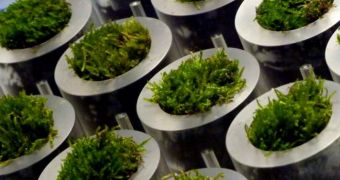Researchers around the world have been working on developing biological fuel cells for many years, and now a team at the University of Cambridge has finally been able to demonstrate the technology.
In a new study, they were able to create fuel cells capable of harnessing energy from plants themselves, opening up a new avenue of research in obtaining alternative, renewable energy from unconventional sources. The team says that it created a prototype table which showcases the process.
The work focused around moss – which many gardeners view as a pest – algae and other similar plants. They have a great potential when it comes to constituting alternative energy sources, the Cambridge investigators seem to believe.
The moss table developed at the university was showcased today, September 22, at the London Design Festival, in the United Kingdom. The event will end tomorrow, and the team will continue to highlight its unconventional prototype. Designers worked alongside scientists in creating the instrument.
According to the research team, the emerging technology on which the moss table is based is called biophotovoltaics (BPV). What this implies is that it uses the naturally-occurring process of photosynthesis to generate electricity from sunlight and vegetation.
In nature, photosynthesis occurs in all plants, as well as in some microorganisms. As the process unfolds, nutrients from the ground and carbon dioxide from the atmosphere are converted into energy and oxygen, in the presence of sunlight acting as a catalyst.
Cambridge Institute for Manufacturing experts Alex Driver and Carlos Peralta designed the moss table together with colleague Paolo Bombelli, who is based at the Cambridge Chemical Engineering and Biotechnology Department.
Over the next decade, the team predicts, BOV could outclass existing renewable technologies, such as biofuels. For now, the biological fuel cells could be used to power devices that have very low energy requirements, such as wristwatches.
Cambridge investigators were every keen to point out that BPV-based technologies are still in their infancy, and that some time will pass until efficient power sources based on them will be released.
“It will be a long time before a product powered by this technology will be commercially available,” explains the head of the Institute for Manufacturing Design Management Group, Dr James Moultrie.
“The table we are exhibiting this week demonstrates the ways in which designers can play a valuable role in early stage scientific research by identifying commercial potential and is one of the outcomes from our Design in Science research project,” he concludes.

 14 DAY TRIAL //
14 DAY TRIAL //